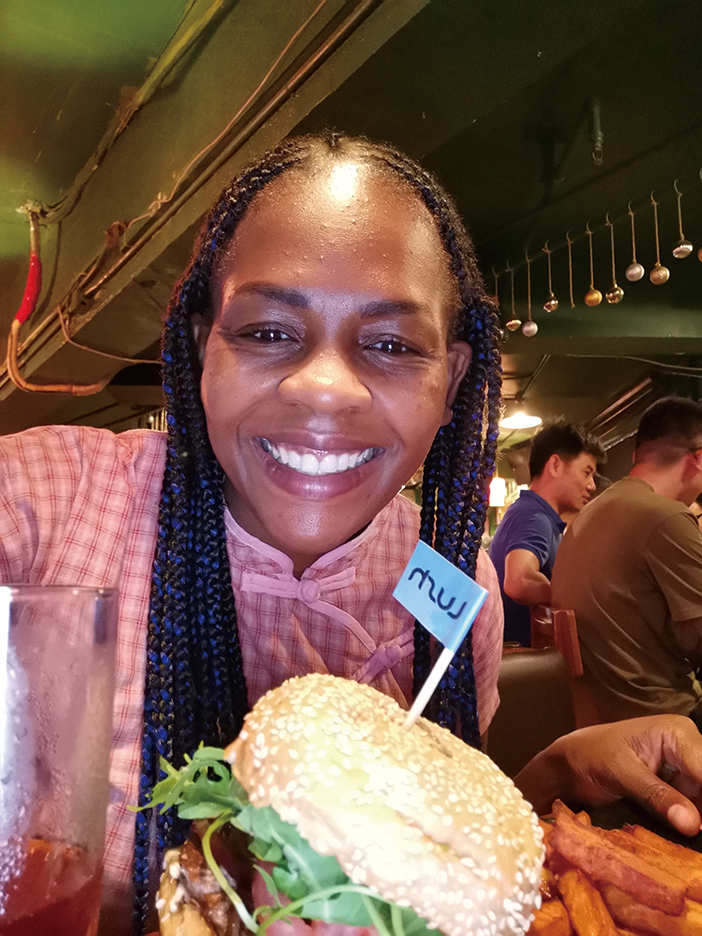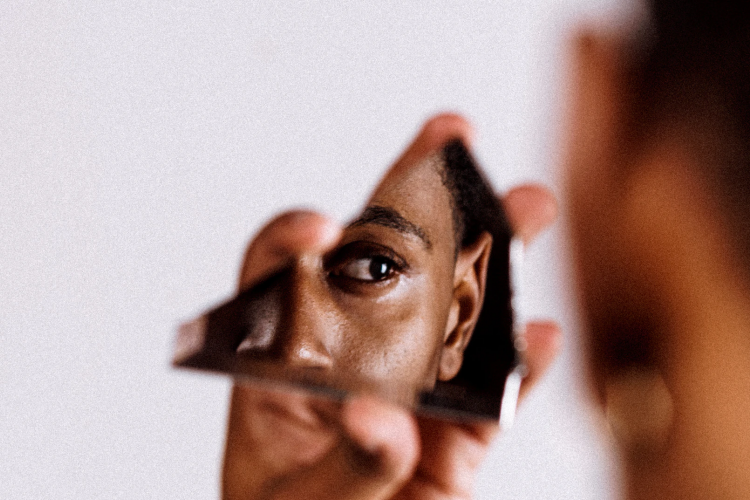A L’Afro Mode: The Experience of Growing and Caring for Natural Black Hair in China
For non-Black people the world over, Afro-textured hair can be a source of fascination, if not absolute wonder and amazement. For one, our hair grows straight up and out, with certain exceptions. As if by magic, the same man or woman with Afro-textured hair can rock different hairstyles from day to day or month to month. The aesthetics and science of Afro-textured hair largely remain a mystery still, despite tons of videos and photos online. Growing up in Kenya, there was no such thing as "Black hair." Hair was hair and it came in different textures but largely the same color. As a child and teen, I wasn’t allowed to grow my hair long but I had female relatives with everything from TWAs – teeny weenie Afros – to long natural hair, to the now demonized relaxer, popular varieties of braids, and on the rare occasion, dreadlocks. It was only when I decided to grow my hair long that I experienced the vastness of Black and African hair care.
This past summer, I attended a seminar aptly titled "Don’t Touch My Hair," where a panel of both Black and Chinese women discussed all matters hair, and this topic has been at the top of my head ever since.
For starters, not all our hair has the same curl or kink pattern. I learned about the hair chart which categorizes hair into four types, with type 1a being the straightest, and type 4c being the kinkiest variety. The variations of kinks and coils meant different routines and regimes. I learned buzzwords like the LOC method, which means using three products – liquid (possibly water), an oil, and a cream to moisturize and seal my hair to avoid dryness and brittleness. Having a thick head of kinks often means a high risk of horrible tangles and catastrophic breakage if I don’t adequately lubricate my strands. Then there was the whole issue of protective styling, where the hair is put into styles to reduce manipulation and retain length. This is where the almost mythical braids come in. But it is not just the braids. Buns, cornrows, and even wigs and weaves worn by those with hair like mine help keep our hair protected from the elements and helps retain length.

But beyond the requisite housekeeping, there was the social aspect of hair. As a Black, African man, my long hair would inevitably have an impact on the way the world perceives me, no matter where I am in the world. As a child, dreadlocks in my country were associated with truancy and delinquency. But as a young adult, dreadlocks became the a la mode hairstyle, inspired by breaking with the European convention of wearing straight hair. Suddenly, women wearing their hair natural was not because they didn’t have money or time to get their hair done, but a conscious and proud decision.
I have watched the transition from mandatory relaxers and the expected straight hairstyles to voluminous ‘fros and banging braids! But coming to China put a different spin on my hair journey. I came to a country with no real history of Western versus African hair. Here, I was no less likely to get a job for not having my hair at a 2” all over, or for showing up to an interview with my hair in locks. But I was likely to get a lot of attention. My hair seemed to add to the fascination. People on trains and streets would insist on touching my hair, taking photos with it, complimenting it, and asking tons of questions about it.
The issue of touching Black and African people’s hair is deeply contentious, with the majority firmly standing in the "never" camp. Too many see it as a violation of personal space. I will admit that I find it annoying, but after four years in China, I have come to just accept it. After getting to know Dorothy Asiedu, an American teen with beautiful natural hair herself, I wondered what it felt like to not only have natural hair for the younger generation but to have grown up with it in China. Thanks to Douyin and Chinese celebrities and socialites rocking Afro-centric hairstyles like braids and dreadlocks, was the discussion of cultural appropriation as hotly debated in the teen circles as it was in my own?
Asiedu, age 16, explains it like this:
"Growing up in Beijing, I’m not surrounded by as many young Black girls with kinky hair. I didn’t have anyone but family to talk to about learning to do my hair and other hair struggles. This played some factor in my braiding skills. Compared to other girls my age with kinky hair, my skills are subpar. I only know how to do the basics such as cornrow braids and twists. My lack of skills is a significant disadvantage because whenever my hairstylist can’t come, I become dumbfounded and have no idea what to do with my hair. The lack of hair salons for kinky hair in Beijing drives me crazy. When I moved to Beijing it took two years for my family to find a suitable salon for black hair. Sadly it closed around five years later. Now, a hairstylist usually comes to my house to do my hair for me.”

Miatta Momoh, the co-founder and business development manager of Kente & Silk, offers an intercultural perspective. “In China, I have been fascinated by how music and pop-culture have inspired young Chinese millennials to take on hairstyles like braided hair and dreadlocks. It’s clear through some conversations I have had that the fact the roots of these fashion statements extend beyond popular Rap culture is not always known. This trend and the fascination with African and African diasporic hair is not always welcomed and this interfering can be intrusive,” offers Momoh, adding, “We are hoping that we can do more deep-dive discussions into this current hot topic while sharing more nuanced stories and historical contexts of Black and African hair."

Also present at the "Don’t Touch My Hair" seminar, was South African Themba Hadebe, an ESL teacher at Beijing BISS International School who shared, “I stopped chemically straightening my hair and started growing out my kinks. Good-quality relaxers were too expensive and the cheap ones were damaging my hair so I did my research on growing out kinky hair and I went natural! Six years later, my hair is healthy and growing, kinky and soft and I’m loving it!
It would seem, whether young or old, especially in China, the process of discovering and caring for natural Black and African hair is a personal journey of self-learning. There are numerous resources out there now dedicated to the care and maintenance of natural hair, and with Taobao, you can get almost any sort of product or hair accessory you want.
KEEP READING: Ghana's Second Ever Winter Athlete Looks to Team Russia for Help
This article originally appeared on our sister site, beijingkids.
Images: Courtesy of Miatta Momoh, Themba Hadebe



